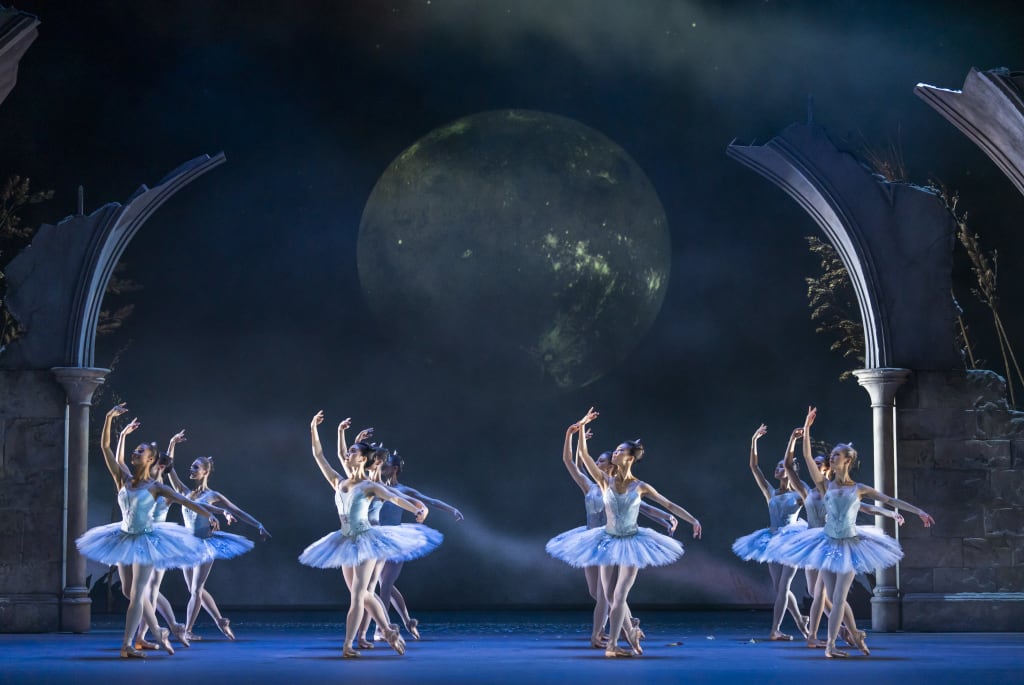The Royal Ballet's 'Cinderella' Review
★★★★☆ This Cinderella is a relive-your-fairytale-childhood-dreams sort of night out.

★★★★☆
Florals? For spring? Groundbreaking.
The 75th anniversary of Ashton's three-act Cinderella is a real feel-good, destress, relive-your-fairytale-childhood-dreams sort of night out.
This new production, which has the tagline ‘where dreams blossom’, and its flowery theme are exactly what the company needs to showcase its rich Ashtonian knowledge.
The ballet's style is English, almost to a fault - the strict rules of classical ballet are only emphasised by Ashton's notoriously difficult and unique style, which has defined the English vein of ballet for almost a century, and the pantomime is rife through the exaggerated (and maybe overused) stepsisters.
The production itself feels elongated, extended to three acts maybe simply for wanting to prolong the audience's night. In truth, the two intervals are nearly as long as the acts that precede them. Unlike the Sleeping Beauty the wedding pas de deux of Act III is short and the scene is void of the divertissements akin to Tchaikovsky ballets (I'm hinting at Sleeping Beauty, Nutcracker, Swan Lake).
Cinderella is as far removed from the tragedies of Romeo and Juliet and yet Prokofiev’s 1945 score for the girl who lost her slipper carries obvious hints at his (far more popular) 1938 score for the star-crossed lovers, through it runs an emotional depth interspersed with moments of sparkle and grandeur, and it is in these lighter moments that Ashton's choreographic genius really shines.
A starry projection encompasses the auditorium before the curtains rise on Tom Pye’s new (and magnificent!) sets. The most stunning moments were the entrance of the Fairy Godmother (here, Annette Buvoli in an underwhelming debut following a most luscious Lilac Fairy) where stars and other wonderful projections overtake the stage to depict the seasons, and the house breaks apart.
I did however have several issues with the costuming by Alexandra Byrne.
Cinderella’s rags aren’t tattered enough, and she emits something more Dorothy-Gale-From-Kansas, the Fairy Godmother’s dress is long and heavy, and hides the lines and nearly all of Ashton’s footwork - noticeable even to those who know nothing about ballet. The Season Fairies' dresses emulate the pantomime of the Stepsisters, their colours too stark and bright, stuck somewhere between monotone and not, against the evolving set and projection multiverse.
Anyway, moving onto the dancing!
The Stepsisters, here Christina Arestis and Kristen McNally, are usually men in drag and act as the ballet’s immediate (and almost always) form of comic relief. Performed in this cast by women the charm of their intent feels to be almost a mockery of the artistry of drag. I’m sure this was not the intent at all, but rather an aim to be more inclusive, but alas… in their final bows even the audience seemed noticeably less inclined to applaud.
Their over the top costumes were not matched by their smaller frames as they aimed to make everything they did larger than life, and mind you I am a huge fan of both Arestis and McNally!
As the titular character, Francesca Hayward (here in her début), is the epitome of Ashtonian style. She uses Cinderella’s initial moments to remind the audience of her natural acting ability before flitting through fine moments of dancing, juggling the tricky footwork, upper body movement and musicality as easily as counting to three.
In Act 2 she descends, like some heavenly ghost, the palace steps en pointe and floats downstage using bourrées so neat and tight you might think the stage itself has carried her forward.
The hummingbird speed of her neat-as-a-pin footwork below the soft indulgence of her upper body movement is a treat to watch, particularly in the her ballroom solo. This is all further amplified in the manèges, where Hayward opts for lowers retirés and passés in the pirouettes as she circles the stage not once, but twice, quickening the movement to an exciting end of a difficult variation. The audience goes wild.
As her Prince (also in his debut), Alexander Campbell makes his way through the Prince’s moments with a cool collection. His partnering of Hayward is near-perfection, this being their 7th season as regular partners.
Their first moments together are magical and playful and their pas de deux oozes another sort of magic, surrounded by the deep and dramatic Prokofiev music - Hayward’s purity of line depicts Ashton’s style, she doesn’t often boast high extensions but instead keeps solid and clean 90° lines further exaggerating her musicality.
As the Jester, Liam Boswell (above) displays excellent command of his trade, garnering mid-performance applauses.
However, amongst the host of soloist opportunities it is the heat of Mariko Sasaki's (below) Fairy Summer that rises to the occasion. Sasaki does not put a foot out of place, showing constant, complete control and exceptional use of technique, making her way off pointe through the entirety of her foot as cleanly as one slices soft cheese (I hope you know what I mean!).
There is not much in the way of dancing in the final act, but as Cinderella and her Prince make their way up Pye’s endless staircase into happily ever after, lovingly in each other arms, it does leave you wondering… is it all really mere folly?
Ashton’s Cinderella plays at the Royal Opera House until 3 May.






Comments
There are no comments for this story
Be the first to respond and start the conversation.